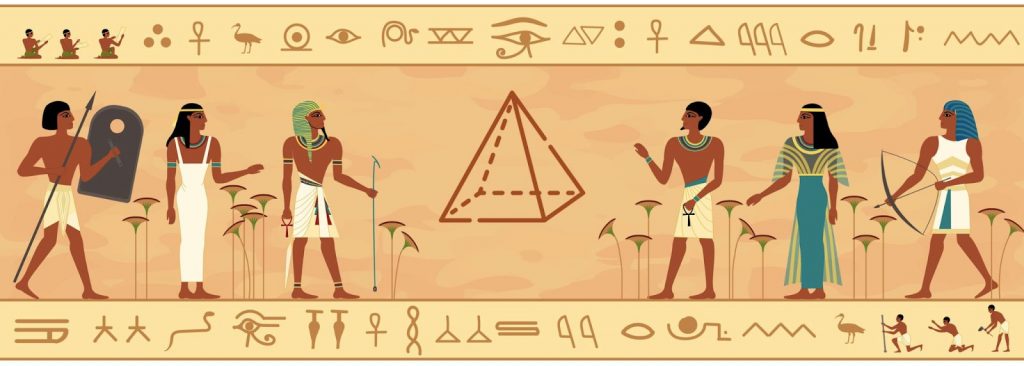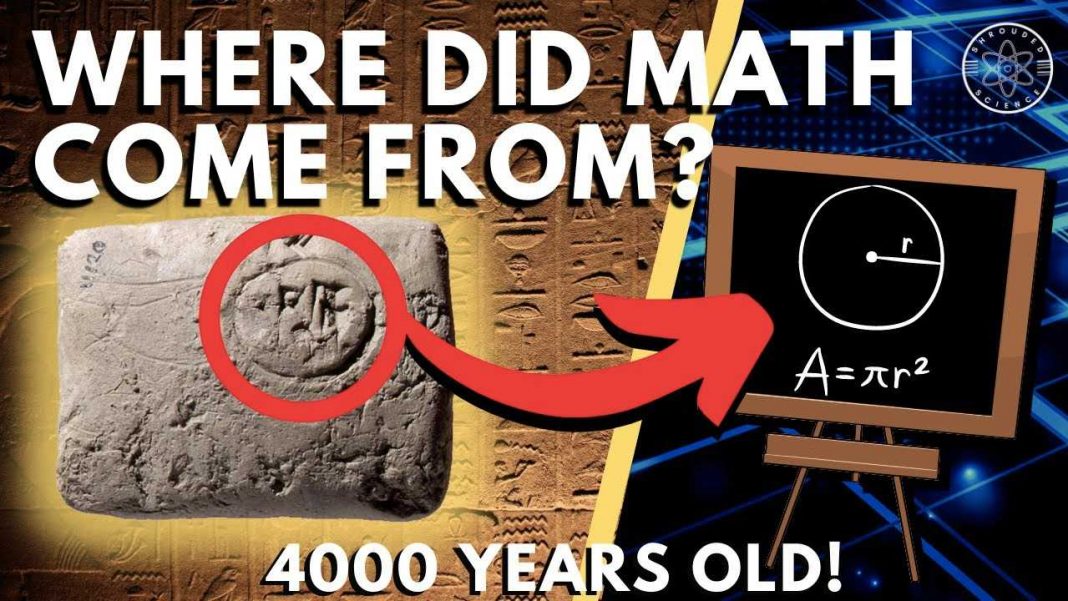Did you know that the oldest known mathematical text dates back to around 1900 BC? Despite its ancient origins, there’s still so much that many people don’t know about the history of math. This blog will explore who invented math, why it was created, when and where it began, and how it has evolved over time. Let’s dive in!
Math & ELA | PreK To Grade 5
Kids see fun.
You see real learning outcomes.
Watch your kids fall in love with math & reading through our scientifically designed curriculum.
Parents, try for free Teachers, use for free
Who Invented Math?

Early Beginnings
The story of who invented math begins with ancient civilizations. The Babylonians and Egyptians were among the first to develop mathematical concepts. They used math for practical purposes such as trade, astronomy, and architecture. Key points include:
- Babylonians: Created a number system based on 60, which is still used today to measure time and angles.
- Egyptians: Used math to build the pyramids, demonstrating their advanced understanding of geometry and arithmetic.
Key Figures
Several key figures in history have significantly contributed to math. Important mathematicians include:
- Pythagoras: A Greek mathematician known for the Pythagorean theorem, fundamental in geometry.
- Euclid: Often called the “father of geometry,” he wrote “The Elements,” a comprehensive compilation of geometric knowledge.
- Archimedes: Made important discoveries in calculus and geometry, including the principle of buoyancy.
Collaborative Evolution
Math did not evolve through the work of a single person or culture. It is the result of contributions from many different cultures and individuals over centuries. This collaborative evolution is marked by:
- Contributions from various cultures: Greeks, Indians, Chinese, Arabs, and many others.
- The universal nature of math: Built upon the discoveries and ideas of many great minds, math is a product of human ingenuity across ages.
By examining the contributions of ancient civilizations and key figures, we can better understand who created math and appreciate the diverse origins of this essential discipline.
Why Was Math Invented?
Practical Needs of Math
The invention of mathematics began with the need to solve practical problems in daily life. Early humans developed basic math to handle tasks such as trade, agriculture, and astronomy. Key points include:
- Trade: People needed to count and measure goods to ensure fair exchanges. This led to the creation of simple arithmetic.
- Agriculture: Farmers used math to measure land, calculate crop yields, and manage resources efficiently.
- Astronomy: Ancient civilizations used math to track celestial bodies, which was crucial for navigation and creating calendars.
Abstract Thought of Math
Over time, the practical use of math evolved into more abstract concepts and theories. This transition marks an important phase in the history of mathematics. Key developments include:
- From Arithmetic to Geometry: Initially, math focused on counting and measuring. Gradually, it expanded to include geometric shapes and their properties.
- Development of Theories: Mathematicians began to explore abstract ideas such as infinity, zero, and negative numbers.
- Formalization of Math: The Greeks, particularly Euclid, formalized math by developing axioms and proofs, turning math into a systematic discipline.
When Was Math Invented?
Prehistoric Times
The beginning of math can be traced back to prehistoric times. Evidence of mathematical concepts is found in ancient artifacts:
- Ishango Bone: Discovered in Africa, this artifact dates back to around 20,000 BC and features carved notches believed to represent a form of counting.
- Lebombo Bone: Another ancient artifact, dated around 35,000 BC, also features notches that suggest early counting methods.
Ancient Civilizations
As societies became more complex, so did their mathematical systems. Key advancements include:
- Babylonians (around 2000 BC): Developed a base-60 number system and made significant advances in algebra and geometry.
- Egyptians (around 3000 BC): Created a decimal system and used geometry to build pyramids and other structures.
- Greeks (around 600 BC – 300 AD): Mathematicians like Pythagoras, Euclid, and Archimedes made foundational contributions. Euclid’s “Elements” is one of the most influential works in the history of mathematics.
- Chinese (around 1000 BC): Made advances in algebra, arithmetic, and geometry, and created the first known decimal place value system.
- Indians (around 500 AD): Developed the concept of zero and made significant contributions to algebra and trigonometry.
Medieval and Renaissance Periods
Key developments during these eras further advanced mathematical knowledge:
- Islamic Golden Age (8th to 14th century): Scholars like Al-Khwarizmi, the inventor of algebra, made significant contributions. They translated Greek and Indian mathematical works, preserving and expanding on them.
- European Renaissance (14th to 17th century): The revival of interest in ancient Greek and Roman knowledge led to significant advancements. Mathematicians like Fibonacci introduced Hindu-Arabic numerals to Europe, and Descartes developed coordinate geometry.
The timeline of mathematical advancements shows that the development of math was a gradual and cumulative process, with each era building on the knowledge of previous ones. From prehistoric artifacts to the complex theories of the Renaissance, the math journey reveals the ingenuity and creativity of the many individuals who contributed to this essential discipline.
Where Did Math Originate?
Mesopotamia
Mesopotamia, particularly Babylon, is one of the key places where math originated. The Babylonians made significant contributions:
- Base-60 System: They developed a number system based on 60, which is still used today for measuring time and angles.
- Algebra and Geometry: Babylonian mathematicians solved quadratic equations and had advanced knowledge of geometry, which they used for construction and astronomy.
Egypt
Ancient Egypt is another crucial region in the history of math:
- Decimal System: Egyptians used a base-10 number system, which is the basis of our current numbering system.
- Geometry for Construction: They applied geometric principles to build the pyramids and other architectural feats. They also used math for land measurement and managing agricultural resources.
Greece
Greek mathematicians made foundational contributions to math, many of which are still studied today:
- Euclid: Known as the “father of geometry,” Euclid wrote “The Elements,” a comprehensive work that systematized geometry.
- Pythagoras: Known for the Pythagorean theorem, he made significant contributions to number theory and geometry.
- Archimedes: He discovered fundamental principles in calculus and geometry, including the concept of buoyancy and the calculation of pi.
India and China
Significant mathematical advancements also occurred in India and China:
- India: Indian mathematicians developed the concept of zero, which is crucial for arithmetic and algebra. Aryabhata and Brahmagupta made significant contributions to algebra and trigonometry.
- China: Chinese mathematicians developed methods for solving complex algebraic equations and made advancements in geometry and number theory. The Chinese also created the first known decimal place value system.
How Was Math Invented?
Early Tools and Symbols
The invention of math began with the use of simple tools and symbols by early mathematicians:
- Counting Tools: Early humans used objects like pebbles, sticks, and bones to count and keep track of quantities. The Ishango and Lebombo bones, with their carved notches, are examples of these early counting tools.
- Numerical Symbols: As societies developed, so did their need for written numbers. Ancient Egyptians used hieroglyphs, Babylonians used cuneiform, and the Chinese used specific symbols for their numbers. These early symbols laid the groundwork for more complex mathematical notation.
Development of Theories
The process of developing mathematical theories and proofs was a significant milestone in the history of mathematics:
- Greek Contributions: Greek mathematicians, particularly Euclid, played a key role in formalizing math. Euclid’s “Elements” introduced axioms, definitions, and proofs, creating a systematic approach to geometry.
- Algebra and Arithmetic: In the Islamic Golden Age, scholars like Al-Khwarizmi, the inventor of algebra, developed methods to solve linear and quadratic equations. This period also saw the introduction of the Hindu-Arabic numeral system, which simplified calculations.
- Calculus and Beyond: During the Renaissance, mathematicians like Newton and Leibniz developed calculus, which provided tools for understanding change and motion. This further expanded the scope and application of math.
Collaboration and Knowledge Exchange
The development of math was greatly influenced by the exchange of knowledge between different cultures:
- Trade and Conquest: The movement of people through trade and conquest facilitated the exchange of mathematical ideas. For example, the knowledge of zero and the decimal system traveled from India to the Islamic world and then to Europe.
- Translation of Texts: During the Islamic Golden Age, scholars translated Greek, Indian, and Persian mathematical texts into Arabic. These works were later translated into Latin, bringing ancient knowledge to Renaissance Europe.
- Global Contributions: The collaborative nature of math means that many cultures, from the Greeks and Egyptians to the Chinese and Indians, have all contributed to its evolution. This continuous exchange and building upon previous knowledge have made math a universal language.
Math in the Modern World
Applications
Math plays a crucial role in various fields and everyday life. Here are some key applications:
- Technology: Math is the foundation of computer science, which drives advancements in software, hardware, and artificial intelligence. Algorithms, data encryption, and coding all rely on mathematical principles.
- Science: In fields like physics, chemistry, and biology, math is used to formulate theories, conduct experiments, and analyze data. It helps scientists understand natural phenomena and make predictions.
- Engineering: Engineers use math to design and build structures, machines, and systems. Calculations involving geometry, algebra, and calculus ensure the safety and functionality of bridges, buildings, and vehicles.
- Economics: Economists use mathematical models to analyze markets, forecast economic trends, and make policy recommendations. Concepts like statistics, probability, and calculus are essential in economic analysis.
- Everyday Life: Math is used in budgeting, cooking, shopping, and planning travel. It helps people manage their finances, measure ingredients, compare prices, and calculate distances.
Continued Evolution
Math continues to evolve with ongoing advancements and discoveries:
- Modern Theories: New branches of math, such as chaos theory and fractal geometry, have emerged. These theories help explain complex systems and patterns in nature.
- Computational Mathematics: The development of powerful computers has enabled the solving of previously intractable mathematical problems. Computational methods are used in simulations, optimizations, and large-scale data analysis.
- Interdisciplinary Research: Math is increasingly used in interdisciplinary research, combining with fields like biology (bioinformatics), economics (econophysics), and social sciences (sociophysics).
- Education and Outreach: Efforts to improve math education and make it more accessible continue. Online resources, educational software, and interactive platforms help students learn math in engaging ways.
Related Reading: Best Math Quotes to Share with Students to Inspire Them
Conclusion
The journey of understanding who invented math reveals a collective effort by many cultures over thousands of years. From practical needs to abstract theories, math has evolved and continues to shape our modern world. Its universal language and ongoing advancements remind us of its vital role in our daily lives and future discoveries.
Related Reading: Best Math Riddles for Kids with Answers
Frequently Asked Questions (FAQs)
Who found 0?
The concept of zero was developed in India by mathematician Brahmagupta in the 7th century. He defined zero and its operations in his work “Brahmasphutasiddhanta.”
Did we discover or invent math?
Math is both discovered and invented. We discover mathematical truths and patterns in nature, and we invent symbols and systems to describe and work with these concepts.
Who invented math formulas?
Math formulas have been developed by many mathematicians over time. Ancient civilizations like the Greeks, Babylonians, and Indians contributed significantly, with figures like Euclid and Al-Khwarizmi playing key roles.
Who invented geometry?
Geometry was significantly developed by the ancient Greeks, with Euclid often called the “father of geometry” for his work “The Elements,” which systematized much of the earlier knowledge into a comprehensive framework.
























